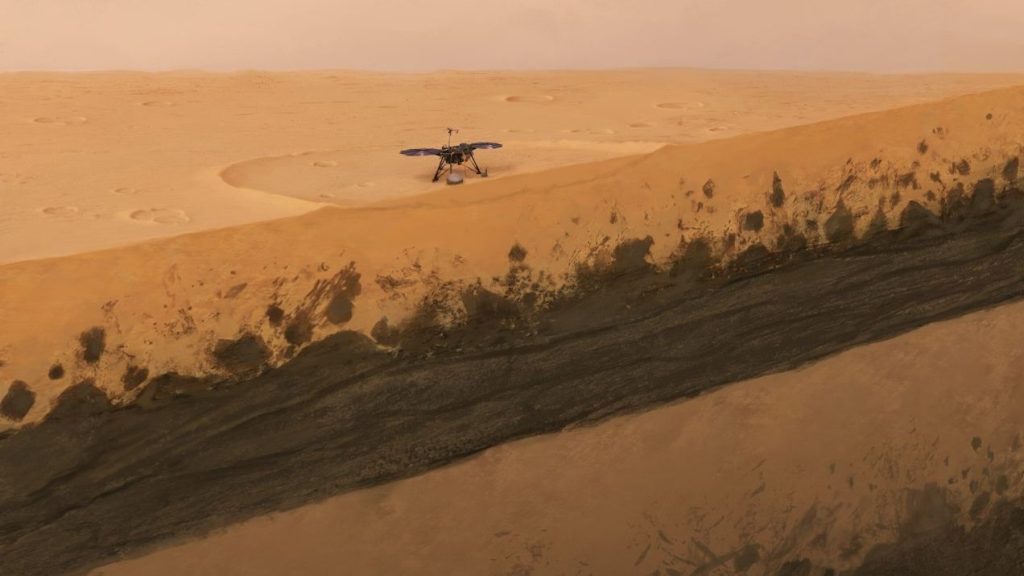The US space probe InSight has been providing insight into the structure of our neighboring planet Mars for nearly two years. Now, for the first time, researchers have succeeded in analyzing layers directly beneath the surface of the Red Planet. As they report in the journal Nature Communications, there are two layers of lava from different ages, as well as deposits and remnants from a larger meteorite impact, in the upper 200 meters below the space probe’s landing site.
Among other things, the InSight probe includes a seismometer that measures the vibrations of the Martian floor. In this way, it is possible to detect vibrations caused by the impacts of meteorites and tectonic activities, which propagate in the form of seismic waves through the entire planetary body. From the measurement data collected so far, researchers have shown that Mars is structured in a similar way to Earth. However, the liquid core is larger and the planetary crust is thinner than previously thought.
Manuel Huebiger of ETH Zurich and colleagues re-analyzed the InSight data and focused their attention on a different type of vibration: In addition to seismic waves that propagate around the planet, the researchers have now also examined surface waves. These vibrations occur when winds strike structures on the Martian Earth, such as craters or ridges. Depending on the type and density of the material under the surface, the vibrations propagate differently. By analyzing these vibrations, it was possible to deduce the material and thus develop a model of the upper 200-meter structure of the Martian crust.
It turns out that the surface of the Red Planet is covered with a layer of regolith about three meters thick – that is, granular rubble and weathered sand. Beneath it, the researchers found a 15-meter-thick layer of larger rocks – apparently expelled by a larger meteorite impact. Down below, this is followed by a layer of lava about 150 meters thick. But within this lava layer – at a depth of 30 to 75 meters – surface waves suddenly spread much slower. Researchers believe that this area consists of fine-grained sediments caused by wind or water. Accordingly, this sediment layer separates two different lava layers that formed one after the other.
By determining the number and size of craters on the surface, conclusions can be drawn about their depth and thus also the time at which they formed. Hobiger and colleagues dated the upper lava layer to 1.7 billion years old, while the lower lava layer was 3.6 billion years old. So, between the two volcanic eruptions that led to the formation of the lava layers, about two billion years ago, enough time passed for a 45-meter-thick layer of sediment to form.

“Total coffee aficionado. Travel buff. Music ninja. Bacon nerd. Beeraholic.”







More Stories
We will tell you the real reason for this physical phenomenon that caused the failure of Isaac Newton
A mysterious discovery on Mars – NASA team talks about “tire tracks” or “dragon scales”
Ringworm (tinea corporis): symptoms and treatment